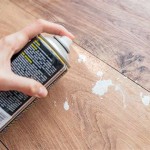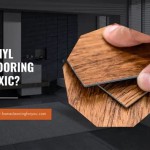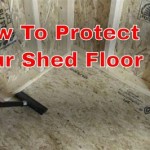Can Lifeproof Flooring Get Wet? Understanding the Waterproof Properties of Luxury Vinyl Plank
Lifeproof flooring, a popular choice for its durability and stylish aesthetics, is often marketed as waterproof. However, the reality of its water resistance is more nuanced than a simple "yes" or "no." While Lifeproof flooring is designed to handle spills and splashes, it's crucial to understand the limits of its water resistance and how to properly care for it to ensure longevity. This article will explore the waterproof properties of Lifeproof flooring, explain the potential risks of prolonged water exposure, and provide practical tips for maintaining its performance over time.
The Reality of Lifeproof Flooring's Waterproof Properties
Lifeproof flooring is constructed using a multi-layered design that includes a wear layer, a core layer, and an attached backing. The core layer is typically composed of a rigid vinyl material, while the backing is often made of a waterproof material like cork or foam. This construction makes Lifeproof flooring inherently resistant to water penetration. Spills and light splashes will not cause immediate damage and can be cleaned up quickly without significant impact. However, it's important to note that Lifeproof flooring is not entirely immune to water.
The term "waterproof" often signifies absolute resistance to water damage, meaning the material can be submerged in water without sustaining any harm. Lifeproof flooring, while highly water-resistant, does not meet this rigorous definition. Prolonged or excessive water exposure can potentially lead to issues. This can include swelling, warping, or even damage to the flooring material. The core layer, while durable, can absorb excessive water, which can cause the flooring to expand and warp. Similarly, the backing layer, while designed to block moisture, might not be able to handle prolonged exposure to standing water.
Understanding the Potential Risks of Excessive Water Exposure
While Lifeproof flooring is designed to withstand everyday spills and splashes, it's essential to be mindful of the potential risks of prolonged or excessive water exposure. One of the primary concerns is the risk of warping or swelling. When water seeps into the core layer of Lifeproof flooring, it can cause the material to absorb moisture and expand. This expansion can lead to visible warping, especially over large areas, and cause the flooring to become uneven. The uneven surfaces could become a safety hazard and potentially compromise the aesthetic appeal of the flooring.
Furthermore, prolonged exposure to standing water can create an environment conducive to the growth of mold and mildew. These microorganisms thrive in damp environments and can cause damage to the flooring material as well as pose health risks. The presence of mold and mildew can necessitate a complete replacement of the flooring, leading to significant expenses and inconvenience. Additionally, if the moisture penetrates the backing layer, it can lead to degradation of the adhesive that holds the flooring to the subfloor. This can result in loose planks and a compromised installation, requiring repairs or replacement.
Best Practices for Maintaining Lifeproof Flooring
To ensure the longevity and performance of Lifeproof flooring, adhering to proper maintenance practices is crucial. The first step is to promptly address any spills or splashes. Clean up any spills immediately, using a dry cloth or mop to remove any excess water. It's also advisable to avoid using excessive amounts of water when cleaning Lifeproof flooring. Instead, opt for specially formulated cleaning products designed for luxury vinyl plank flooring. These cleaners are formulated to remove dirt and grime while minimizing the risk of water damage.
In addition to regular cleaning, it's essential to prevent standing water on the floor. This can be achieved by using rugs or mats in areas prone to moisture buildup, such as entryways and near sinks. Regularly inspect your Lifeproof flooring for any signs of water damage, including warping, discoloration, or mold growth. Addressing any issues promptly can help prevent more severe damage and ensure the long-term performance of your flooring.
For areas where water exposure is more frequent, such as bathrooms or kitchens, it's advisable to consider using a water sealant specifically designed for vinyl flooring. These sealants create an additional barrier against water penetration, further enhancing the water resistance of Lifeproof flooring. When installing Lifeproof flooring, ensure the subfloor is clean, dry, and level to minimize the risk of water intrusion. If the subfloor is uneven, consider using a leveling compound to create a smooth surface.

Lifeproof Flooring Fresh Oak

Installing Vinyl Plank Flooring Lifeproof Waterproof Rigid Core Sustain My Craft Habit

Lifeproof Flooring Woodacres Oak

Lifeproof Clermont Elm Flooring

When Underlayment Is Not Necessary For Laminate Flooring

How To Install Vinyl Plank Flooring Lifeproof Lvp

Lifeproof Brooks Oak Flooring

Lifeproof Ashworth 7 6 In W X 50 L Waterproof Hybrid Resilient Flooring 21 2 Sq Ft Case 63206 The Home

Why We Chose Lifeproof Vinyl Flooring And How To Install It

How To Install Vinyl Plank Flooring Lifeproof Lvp
See Also







